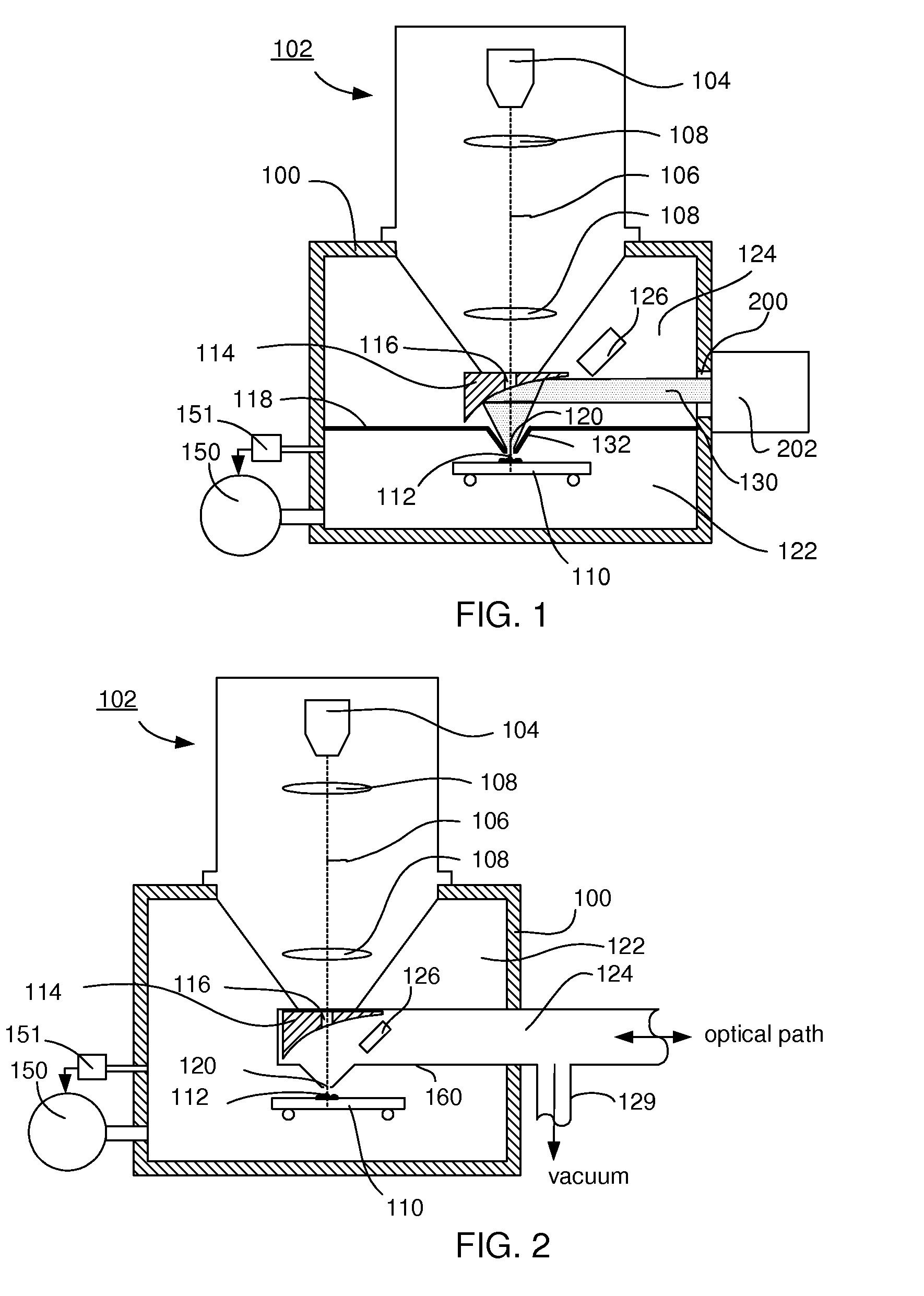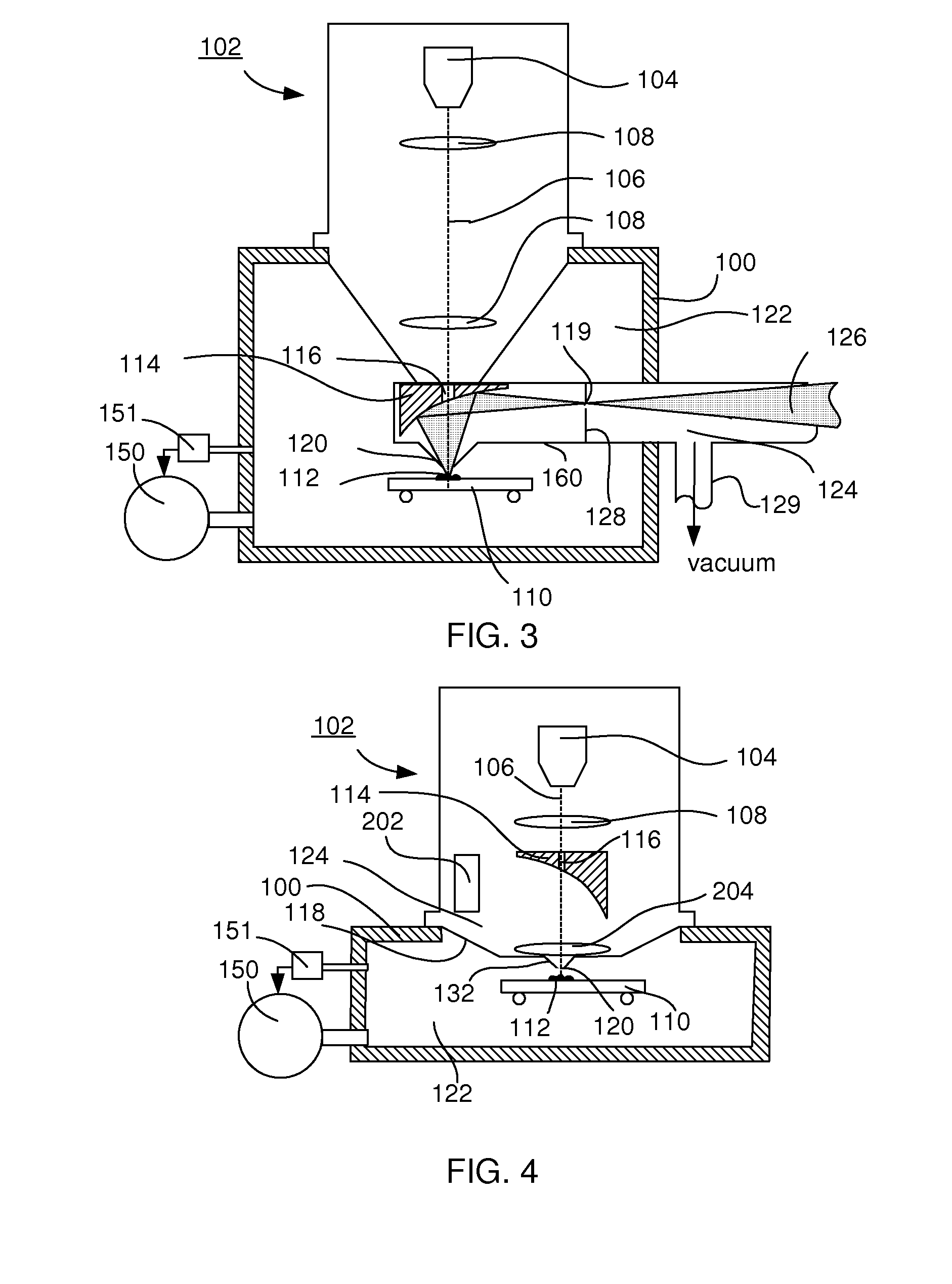Particle-optical apparatus for simultaneous observing a sample with particles and photons
- Summary
- Abstract
- Description
- Claims
- Application Information
AI Technical Summary
Benefits of technology
Problems solved by technology
Method used
Image
Examples
Embodiment Construction
[0033]To that end the apparatus according to the invention is characterized in that a diaphragm is placed between the sample position and the mirror, said diaphragm dividing a first volume in which the sample position is located from a second volume, said diaphragm showing an aperture round the particle-optical axis for passing particles produced by the particle-optical column and for passing light between the mirror and the sample position, the aperture limiting the gas flow from the first volume to the second volume to such a value, that, when the pressure at the sample position is the equilibrium pressure of a fluid with an equilibrium pressure above 1 mbar, the evacuation means can evacuate the second vacuum to a pressure sufficiently low to cause negligible scattering of the particle beam in the second volume when compared to the scattering in the first volume, and the distance between the aperture and the sample position can be adjusted to be, or is fixed at, less than four ti...
PUM
 Login to View More
Login to View More Abstract
Description
Claims
Application Information
 Login to View More
Login to View More - R&D
- Intellectual Property
- Life Sciences
- Materials
- Tech Scout
- Unparalleled Data Quality
- Higher Quality Content
- 60% Fewer Hallucinations
Browse by: Latest US Patents, China's latest patents, Technical Efficacy Thesaurus, Application Domain, Technology Topic, Popular Technical Reports.
© 2025 PatSnap. All rights reserved.Legal|Privacy policy|Modern Slavery Act Transparency Statement|Sitemap|About US| Contact US: help@patsnap.com



